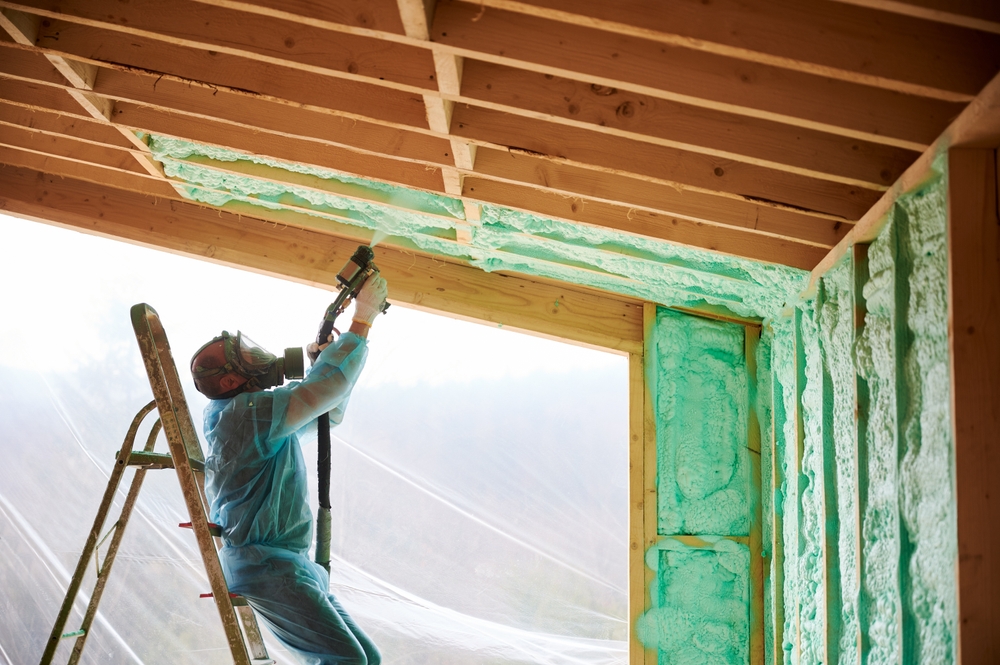
Best Insulation Options for Hot Days and Cold Nights
As the world increasingly experiences extreme weather patterns, choosing the right insulation has become more crucial than ever. Homes and buildings in regions with hot days and cold nights face a unique challenge: maintaining interior comfort amid wide temperature swings. Whether it’s scorching heat during the day or freezing temperatures after sunset, the structure must retain desirable indoor temperatures while keeping energy consumption in check. Understanding the best insulation for hot and cold climates is essential not only for comfort but also for energy efficiency and long-term sustainability. Let’s explore the most effective insulation solutions that meet these dual demands.
Understanding Thermal Performance in Dual-Climate Conditions
To choose insulation for extreme temperature swings, it’s vital to first understand how thermal performance works. Insulation functions by resisting the transfer of heat, measured in terms of R-value. A higher R-value indicates better resistance to heat flow, which is beneficial both for retaining warmth during cold nights and for keeping interiors cool on hot days. However, insulation performance is not just about the R-value. The material’s density, moisture resistance, air permeability, and thermal mass also influence how well it performs in dual-climate scenarios.
Hot days and cold nights often occur in desert climates, high-altitude regions, or areas with continental weather patterns. In these conditions, heat gain during the day can be intense, while rapid cooling at night can drop temperatures dramatically. An ideal insulation system will prevent the interior from overheating during the day while slowing heat loss during the night. This balancing act requires materials that can perform under dynamic conditions, rather than just average yearly temperatures.
Spray Foam: The Sealing Powerhouse
Spray polyurethane foam (SPF) is among the top contenders when evaluating the best insulation for hot and cold climates. This versatile material is applied as a liquid that expands into a dense foam, filling cracks, gaps, and hard-to-reach areas. What sets spray foam apart is its ability to provide both high R-values and air sealing in one application.
In hot climates, closed-cell spray foam reflects and slows down the influx of heat. It keeps attics and walls from acting like radiators that transfer heat into the home’s interior. In cold conditions, the foam’s density reduces convective heat loss, making it ideal for maintaining warmth during frigid nights. Additionally, the moisture resistance of closed-cell SPF makes it a strong candidate in areas prone to condensation or occasional precipitation, further enhancing its thermal stability.
Open-cell spray foam, while slightly less insulating in terms of R-value, provides superior air sealing and soundproofing. It is particularly useful in interior walls where extreme cold protection is less critical. For buildings in areas with daily temperature extremes, a combination of open- and closed-cell spray foam can deliver customized insulation performance for different parts of the structure.
Rigid Foam Boards: Versatile and Effective
Rigid foam boards, such as expanded polystyrene (EPS), extruded polystyrene (XPS), and polyisocyanurate (polyiso), are widely used for their excellent thermal resistance and moisture control. These boards are lightweight, easy to install, and provide a consistent R-value per inch of thickness. For buildings facing high diurnal temperature variation, rigid foam boards are particularly effective in exterior insulation applications, such as under siding or roofing systems.
Polyisocyanurate, in particular, offers one of the highest R-values among foam board options. It acts as a reliable thermal barrier during hot days by reflecting radiant heat and significantly slowing heat transfer. At night, its dense structure helps prevent heat from escaping, which is crucial in colder conditions.
When installed with a radiant barrier or reflective foil, rigid foam insulation can further enhance resistance to solar radiation. In climates with clear skies and direct sun exposure, this feature can make a noticeable difference in daytime heat gain. Properly taped and sealed foam boards can also serve as a secondary air barrier, improving overall energy efficiency.
Mineral Wool and Fiberglass: Traditional Choices with Modern Adaptability
Mineral wool and fiberglass insulation have long been staples in residential and commercial buildings, and modern innovations have made them more effective than ever in dealing with extreme temperature swings. Both materials function by trapping air within their fibrous structure, reducing heat transfer through conduction.
Mineral wool, which includes rock wool and slag wool, offers superior fire resistance and moisture repellency compared to fiberglass. Its thermal properties are consistent across a range of temperatures, making it suitable for areas where insulation must perform under both heat and cold. Moreover, mineral wool’s high density provides a modest level of thermal mass, which helps buffer against rapid temperature changes.
Fiberglass batts and rolls, though more affordable, can still be very effective when properly installed. The key to optimizing fiberglass performance is minimizing air gaps and compressions, as these can drastically reduce its insulating power. For homes experiencing hot days and cold nights, fiberglass works well when paired with air sealing measures such as caulking and weatherstripping. When combined with vapor barriers and ventilation strategies, it can serve as a reliable, cost-effective insulation solution.
Reflective and Radiant Barrier Systems: Smart Additions in Hot-Cool Environments
Reflective insulation and radiant barriers offer targeted solutions for hot climates and can be valuable components in mixed-temperature zones. These systems work by reflecting radiant heat away from the building, significantly reducing heat gain in attics, walls, and roofs. While they don’t offer substantial R-values on their own, when used in conjunction with other insulation types, they greatly enhance the home’s resistance to solar heating.
During hot days, radiant barriers prevent the sun’s energy from penetrating the roof and heating up interior spaces. This effect is especially beneficial in attics, where temperatures can soar to uninhabitable levels. By keeping this space cooler, reflective systems reduce the overall thermal load on air conditioning systems.
Although radiant barriers are less effective during cold nights since they don’t retain heat, their contribution to daytime heat reduction means the home starts the evening cooler, easing the transition into heating mode. For maximum efficiency, they should be installed facing an air gap and be kept free of dust or debris, which can compromise their reflective properties.
In climates with wide temperature fluctuations, a layered approach often works best. Pairing reflective barriers with thermal mass materials, such as concrete or adobe, can further stabilize internal temperatures by storing heat during the day and releasing it at night. This passive design principle aligns well with the performance characteristics of radiant systems.
Choosing the Right Combination for Your Climate
Ultimately, the best insulation for hot and cold climates depends on a variety of factors, including regional weather patterns, building design, and budget. No single insulation type is universally perfect for all structures, which is why a hybrid approach is often the most effective. Combining spray foam’s air sealing capabilities with the consistent thermal resistance of rigid foam, and adding mineral wool for fire resistance and soundproofing, can create a robust insulation system tailored to extreme temperature swings.
Equally important is the quality of installation. Even the most advanced insulation will underperform if poorly installed. Attention to detail, such as sealing air leaks, avoiding compression in batts, and ensuring proper vapor control, can dramatically improve insulation effectiveness. Professional evaluation and energy audits can also help identify the most cost-effective improvements based on your home’s existing structure and exposure.
Conclusion
As the demand for energy-efficient, climate-adaptive homes continues to grow, innovations in insulation materials and techniques will play a central role. Today’s homeowners and builders have more tools than ever to create environments that remain comfortable regardless of what the thermometer reads outside. By investing in high-performance insulation and smart design strategies, it’s possible to live comfortably and sustainably, even in the most extreme conditions.
Need a Remodeling Contractor in Santa Fe, NM?
Welcome to Apple Construction LLC.! Apple Construction LLC. has been in business since 2015 and has been serving Santa Fe, New Mexico and surrounding areas ever since. We specialize in new construction, remodels, additions, design consultations and planning, and so much more! At Apple Construction, LLC., we pride ourselves on our customer service and honesty. We provide each of our clients with quality work and dependability. Apple Construction LLC. has been locally owned and operated for the past 30 years and counting. We have local ties with the Chamber of Commerce and we are also proud members of the Better Business Bureau. Give us a call today and we’ll get started on your dream home!
Categorised in: Insulation

